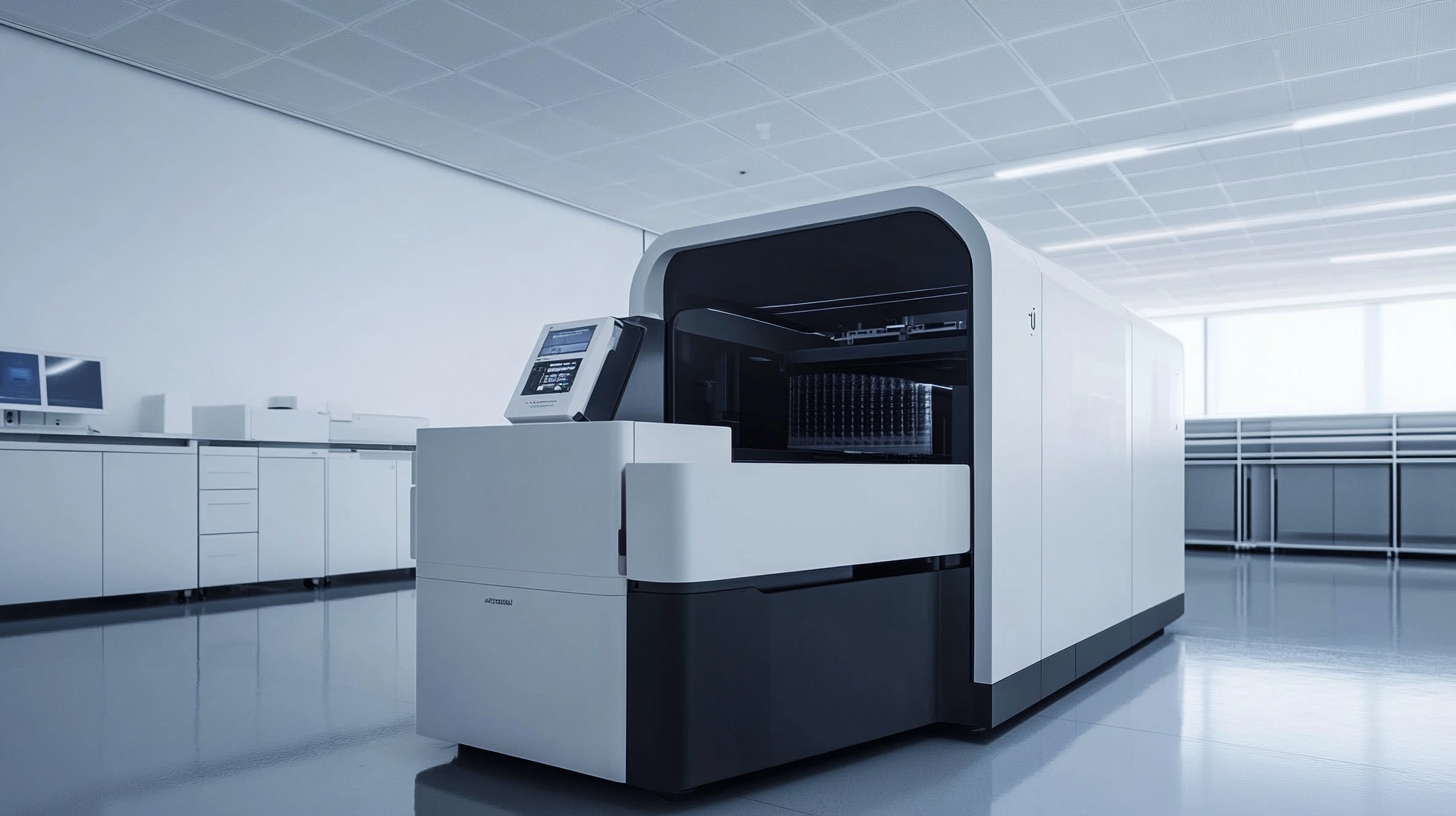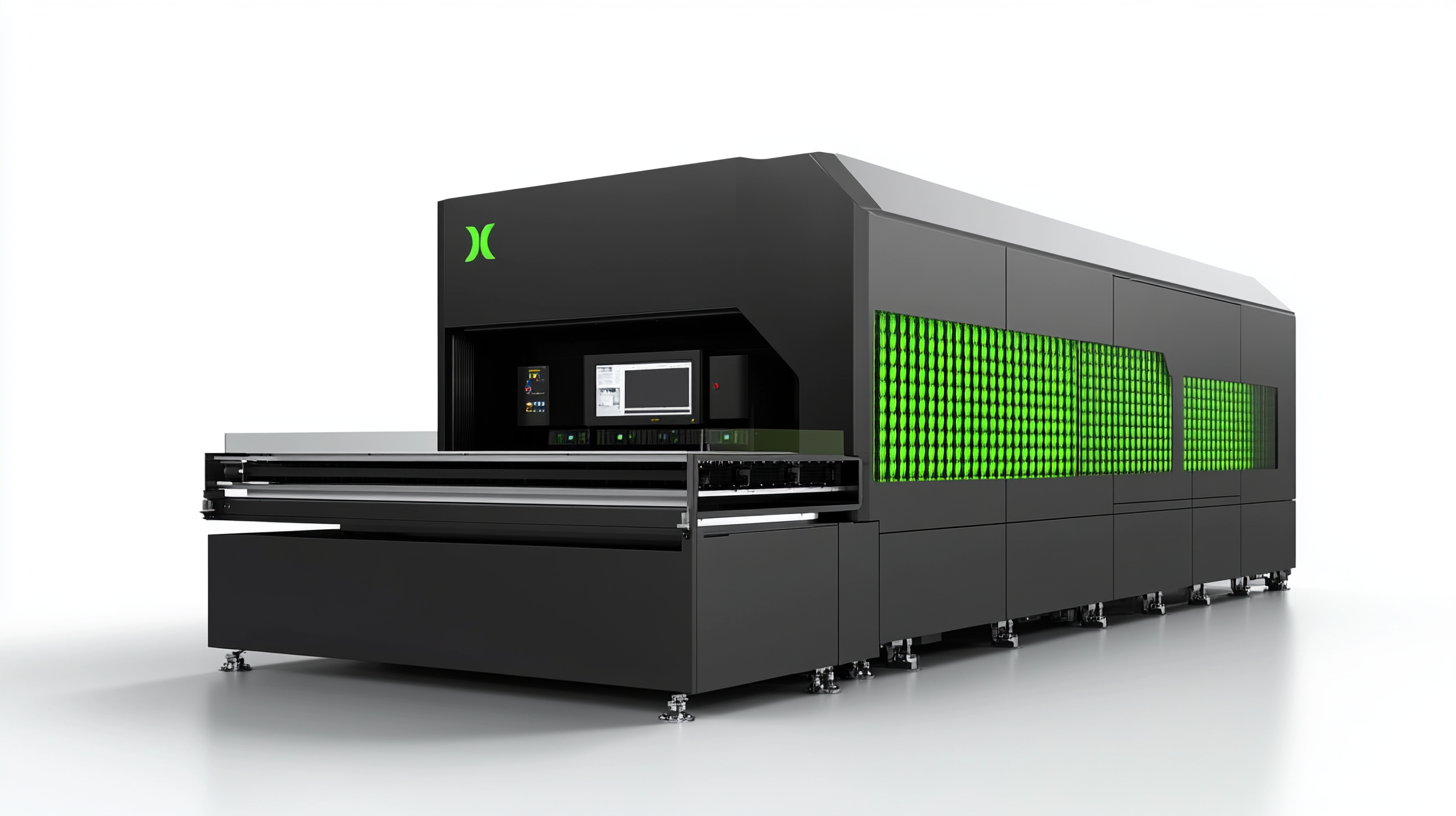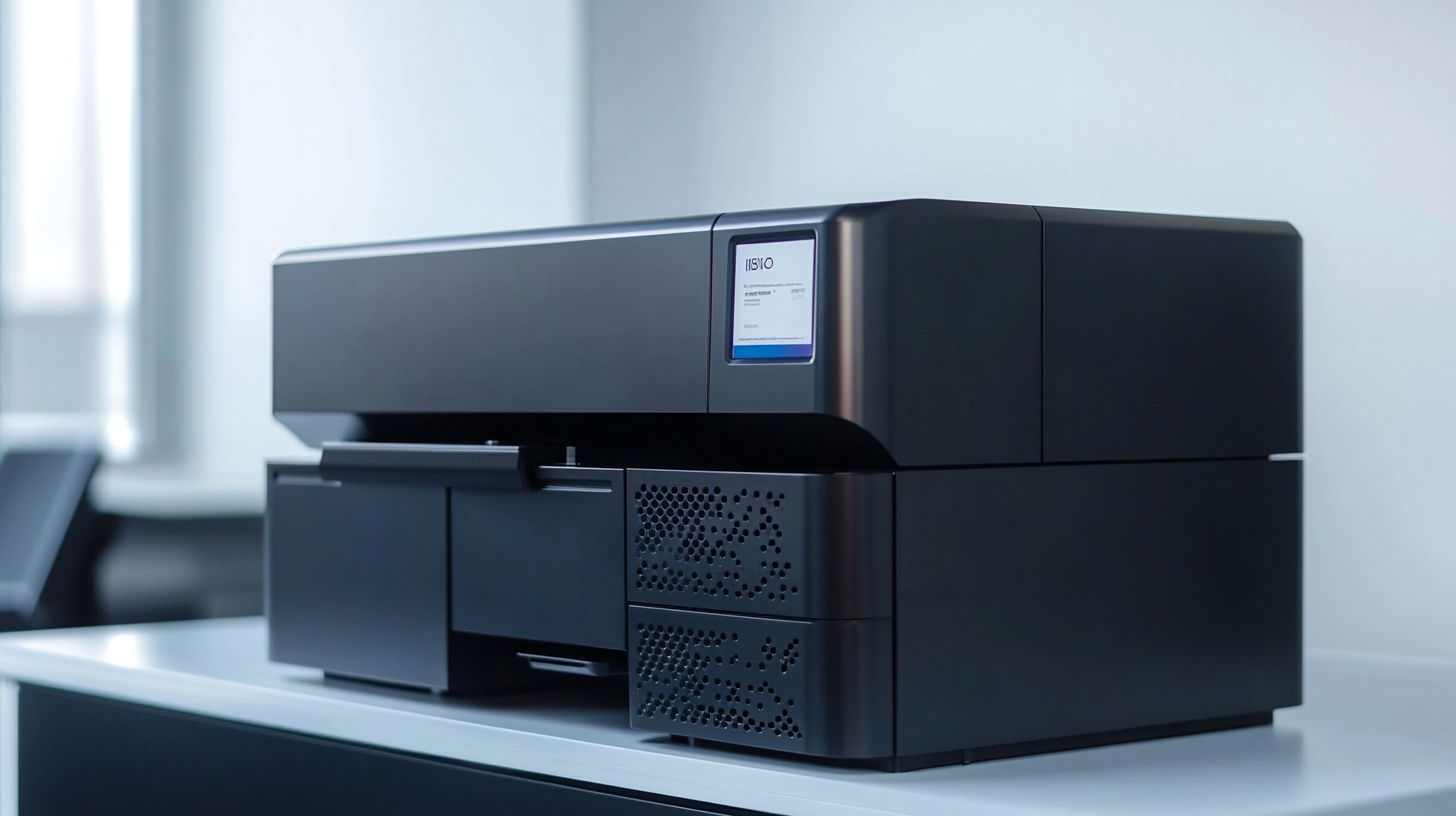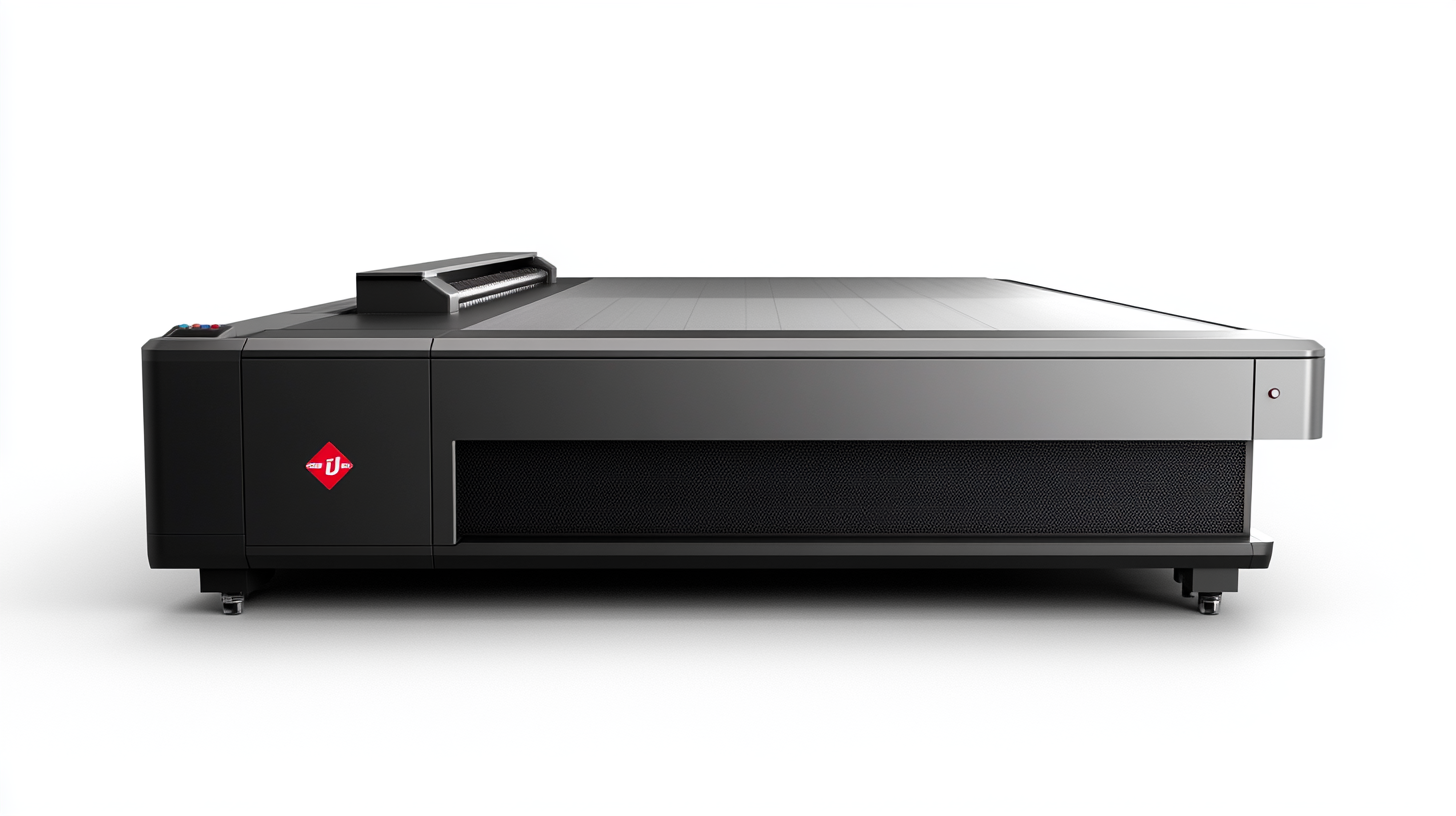Partner Login
Enter your username and password here on order to log in on the partner portal:
No registered partner yet?
Register nowExploring the Future of Cij Printers: Trends and Strategies for Global Buyers in 2025
As we move towards 2025, the landscape of industrial printing technology is undergoing significant transformations, particularly in the realm of Continuous Inkjet (CIJ) printers. These versatile machines have proven their worth in a variety of sectors including food and beverage, pharmaceuticals, and packaging, thanks to their ability to produce high-quality, durable prints at high speeds. The efficiency and adaptability of CIJ printers make them an indispensable tool for manufacturers aiming to enhance their production processes and meet the ever-evolving demands of global markets.
In this blog, we will delve into the emerging trends and strategic considerations that global buyers should be aware of when investing in CIJ printer technology. From advancements in ink formulations to integration with smart manufacturing systems, the future holds numerous opportunities for optimization and innovation in the use of CIJ printers. By understanding these developments, buyers can make informed decisions that not only elevate their operational capabilities but also position their businesses for success in an increasingly competitive landscape. Join us as we explore what lies ahead for CIJ printers and the strategies that can help buyers navigate this dynamic environment.

Emerging Technologies Shaping Cij Printers: A Look Ahead to 2025
In the realm of Continuous Inkjet (CIJ) printers, 2025 is poised to be a landmark year, driven by emerging technologies that are reshaping the landscape of industrial printing. According to a recent report by Smithers Pira, the global CIJ market is expected to grow at a compound annual growth rate (CAGR) of 4.5% through 2025, reaching a value of approximately $1.2 billion. This growth is significantly influenced by advancements in digital technology and increased automation across various manufacturing sectors. One of the most notable technological shifts is the integration of IoT (Internet of Things) capabilities in CIJ printers. This trend allows for real-time monitoring and maintenance, reducing downtime and ensuring efficient operations. A report from MarketsandMarkets suggests that the adoption of IoT in printing technologies is anticipated to surge, with manufacturers seeking smart solutions that enhance productivity and reduce operational costs. As CIJ printers become increasingly connected, global buyers must adapt to the demand for smarter, more efficient equipment that can seamlessly integrate into advanced production lines. Additionally, the move towards eco-friendly printing solutions is gaining momentum. As regulatory pressures increase worldwide, the demand for low-emission ink formulations and sustainable materials will become paramount. The recent sustainability report by Grand View Research indicates that the market for eco-friendly inks is projected to grow by 6% annually, compelling CIJ printer manufacturers to innovate and provide solutions that align with environmental standards. Buyers in this space should prioritize suppliers promoting sustainable practices and technologies as a critical strategy for remaining competitive in the global market.

Market Growth Projections for Cij Printers: Key Statistical Insights
The future of CIJ printers appears promising, with significant growth projections noted across the broader industrial printing sector. According to recent market analyses, the global industrial inkjet printers market is poised for explosive expansion, expected to reach a staggering $11.22 billion by 2031. This surge reflects an increasing demand for efficient and versatile printing technologies across various industries.
A closer look at the technologies within this landscape reveals continuous inkjet (CIJ) technology as a critical player. As industries move towards automation and higher production rates, the value of CIJ printers in marking and coding applications becomes ever more apparent. In fact, the global Piezo MEMS inkjet printhead market is set to grow significantly by 2033, driven by innovations in drop-on-demand and CIJ technologies. Such advancements indicate a robust appetite for CIJ printers that cater to complex printing needs in fast-paced production environments.
Furthermore, the large format printer market, with an estimated value of $9.11 billion in 2023 and projected growth at a CAGR of 5.0% through 2030, underscores the trend towards high-quality, large-scale printing solutions. As buyers navigate their options in 2025, understanding these statistical insights will be essential in making informed purchasing decisions, particularly in selecting CIJ printers that align with future market demands and technological advancements.

Sustainability in Cij Printing: Trends Towards Eco-Friendly Solutions
The conversation around sustainability in Continuous Inkjet (CIJ) printing is gaining momentum as global buyers gear up for 2025. As the demand for eco-friendly solutions intensifies, CIJ printers are evolving to meet these sustainable objectives. Industry experts suggest that by integrating advanced technologies such as sustainable robotics and eco-conscious materials, manufacturers can significantly reduce their environmental impact while enhancing efficiency.
Companies are increasingly seeking CIJ printing methods that minimize waste and energy consumption. Recent innovations highlight the potential of biodegradable inks and recyclable printing materials, paving the way for a more sustainable future. Additionally, the rise of automation and smart technologies in the printing process can further streamline operations, reducing costs and carbon footprints simultaneously.
The labelling and coding sector—particularly within the confectionery industry—illustrates the necessity for sustainable practices. With a growing awareness of environmental issues, confectionery manufacturers are relying on coding and marking specialists to implement green practices. As these strategies unfold, the CIJ printing landscape will likely see a shift towards solutions that prioritize eco-friendliness, meeting both regulatory standards and consumer expectations for sustainability. This creates a pathway for all players in the market to embrace practices that not only benefit their bottom line but also contribute positively to the planet.

Adapting to Consumer Demands: Customization and Flexibility in CIJ Technology
The landscape of Continuous Inkjet (CIJ) printers is evolving rapidly, driven by the dynamic demands of consumers in a diverse marketplace. As we look towards 2025, customization and flexibility have emerged as paramount factors that global buyers prioritize when selecting CIJ technology. Manufacturers are increasingly recognizing that a one-size-fits-all approach is no longer viable; instead, they must adapt to the unique requirements of different industries and applications.
In this shifting paradigm, customization allows businesses to tailor their CIJ solutions to specific production needs, whether that involves varying print sizes, styles, or materials. This versatility not only enhances operational efficiency but also enables companies to implement branding strategies that resonate with their target audiences. As consumer preferences shift towards personalized products, CIJ technology must keep pace by offering enhanced customization options, thereby empowering businesses to differentiate themselves in the market.
Moreover, the growing trend of sustainability within consumer demands compels CIJ manufacturers to innovate. Flexible printing solutions that utilize eco-friendly inks or reduce waste during the printing process are gaining traction. The adoption of sustainable practices not only meets the expectations of environmentally conscious consumers but also positions companies as responsible players in their industries. By integrating customization and sustainability in their CIJ offerings, manufacturers can support global buyers in making smart purchasing decisions that align with future market trends.
Strategic Investment Areas for Buyers: Maximizing Value in Cij Printer Purchases
As we look towards 2025, global buyers of Continuous Inkjet (CIJ) printers need to strategically invest in areas that will maximize their purchasing value. Understanding emerging trends in the CIJ printer market is essential for making informed decisions. One notable trend is the increasing integration of smart technology within CIJ printers, which can significantly enhance production efficiency and reduce operational costs. Buyers should focus on acquiring printers that offer advanced connectivity options and AI capabilities, as these features will likely become standard in the industry.
Moreover, strategic investment should also encompass sustainability practices. Manufacturers are increasingly prioritizing eco-friendly technologies and materials, and buyers can benefit by selecting CIJ printers that align with these green initiatives. Such investments not only contribute to environmental responsibility but can also improve a company’s reputation and customer appeal in a market that is progressively prioritizing sustainability.
In addition to technological advancements and sustainability, buyers should be aware of the financial landscape characterized by strategic acquisitions and investments in the broader market. Just as companies explore various funding strategies, potential buyers should consider their own purchasing strategies, ensuring that they are prepared for the evolving landscape. This comprehensive approach will enable global buyers to maximize value in their CIJ printer purchases while staying ahead in an increasingly competitive market.
